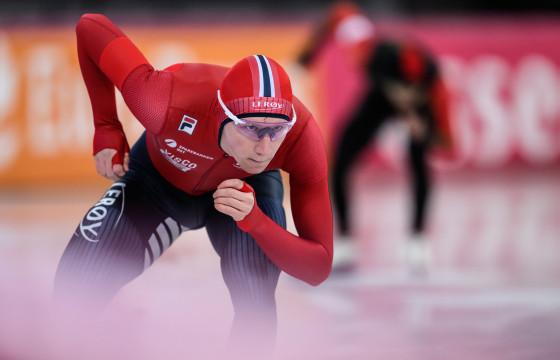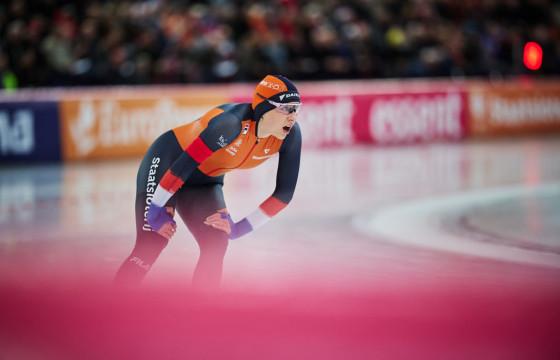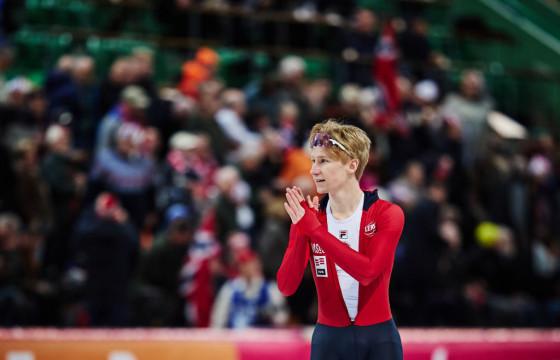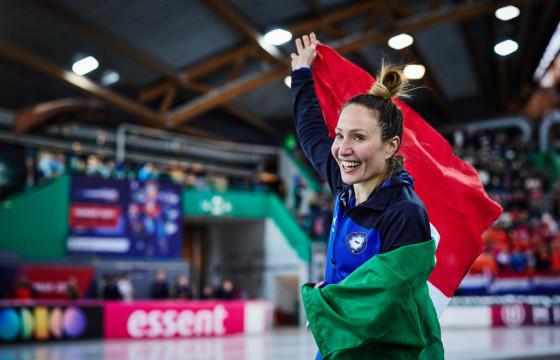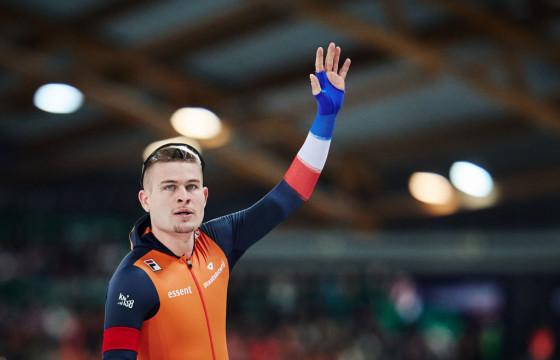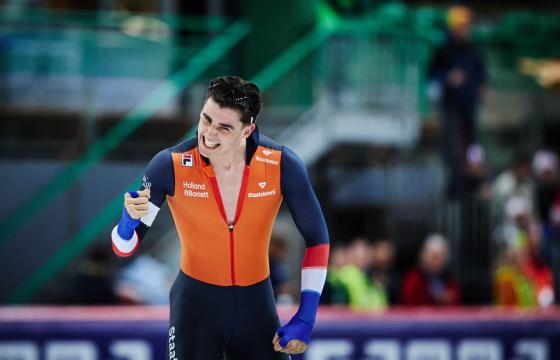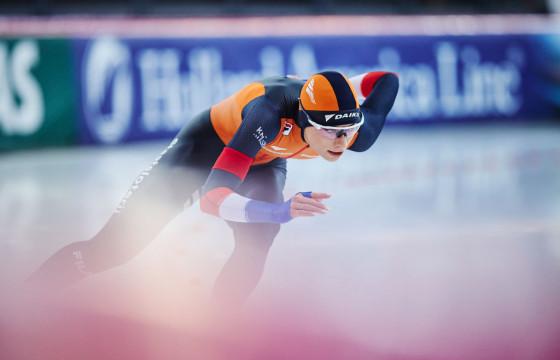SPEED SKATING
New fans’ guide: Speed Skating 101
13 Nov 2024
#SpeedSkating
Speed skating looks simple: two racers start, and whoever crosses the line the fastest, wins. It’s about times and records. But there’s more to it than just cold stats. “If there’s too much thinking in numbers, the magic will be gone,” world champion Laurent Dubreuil (CAN) once said about the art of speed skating. Here’s how that magic happens...
The art of speed skating
Speed skating is a combination of strength, stamina and technique. To move forward, an athlete has to push sideways. Technique involves composure, balance, movement and timing.
A skater uses their bodyweight in a movement to the left to push right with the right skate, while the left skate returns under the body, back on the ice.
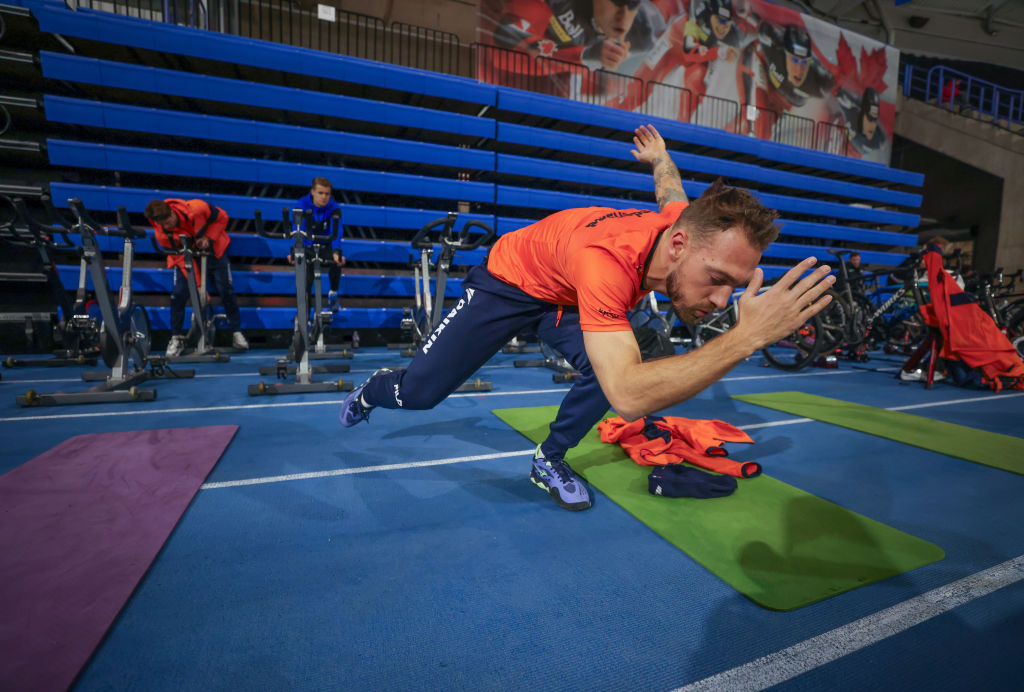
Kjeld Nuis of the Netherlands stretches before competing © ISU
Balancing weight and timing the push is very specific. Keeping the body low with sharp angles in the knees and the hips is essential.
Technique for the straights is different from the corners, where skaters lift their right foot over their left, with the left pushing on the edge of the blade underneath the body. Accelerating in corners is generally easier than accelerating on straights.
The importance of technique can’t be understated. Raw power doesn’t always generate more speed, and it can even be counterproductive, as Dutchman Koen Verweij explained after a lost race. “In the corner I lost my technique, that’s the fighter in me,” he said. “It’s trying too hard but I need to control my technique better.”
Indiscriminate
Many sports favor certain body types – but speed skating doesn’t: the sport is completely indiscriminate. Both the small and lightweight Kim Min-Sun (KOR) and the tall and powerful Jutta Leerdam (NED) are excellent sprinters.
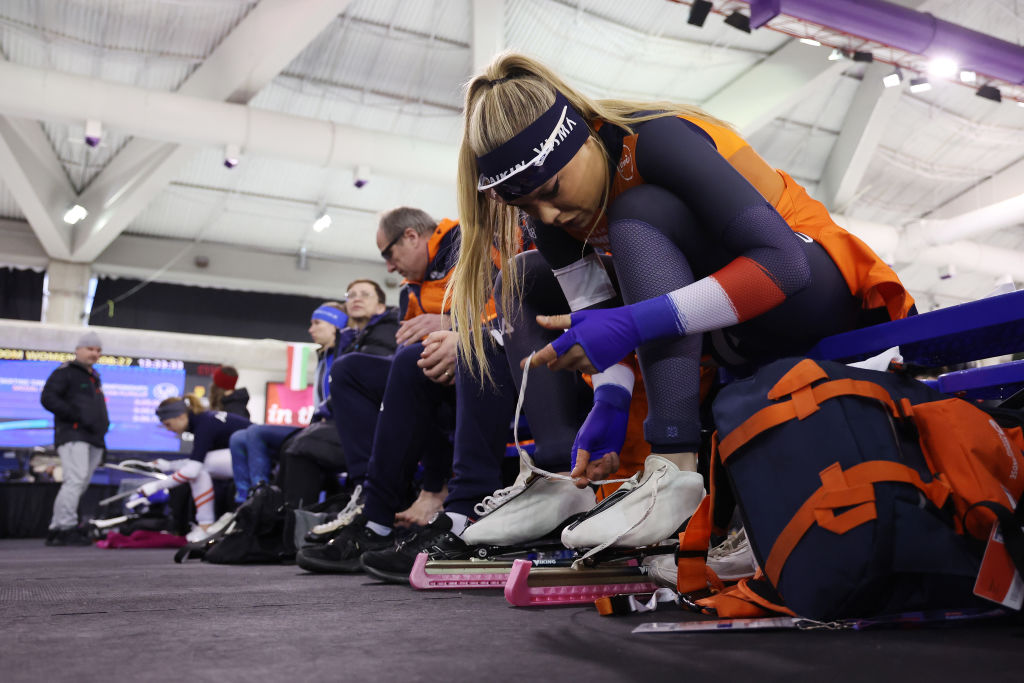
Jutta Leerdam (NED) © ISU
And compare the 1.62m (5ft 4in) former Olympic and five-time world champion Hiroyasu Shimizu (JPN) with Jeremy Wotherspoon (CAN), also a multiple world champion, who measured 1.90m (6ft 3in). Both are former world record holders in the 500m. The basics are the same but when it comes to the details there’s not a perfect way to do it. What works for one skater may not work for another.
Clap skates
Until the 1990s, skaters had their blades fixed. But 30 years ago, the clap skate was developed. A hinge at the front of the boot allows the blade to remain in contact with the ice for longer, therefore the skater can extend the ankle further to make a longer stroke.
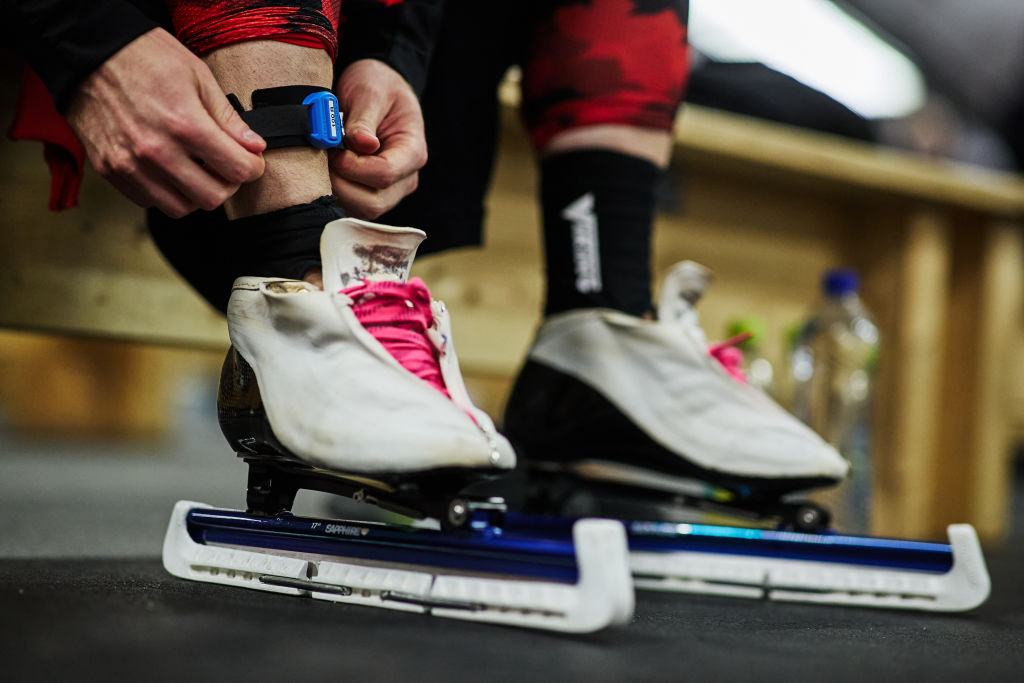
Laurent Dubreuil (CAN) prepares © ISU
Air resistance
The science of skate over ice is complex; heat generated during the sliding melts some ice, which lubricates the slide. The resistance of the ice is low, which makes air resistance the strongest obstacle to overcome. To reduce this, skaters have used skinsuits since the 1970s – and will always try to keep their upper body low to become more aerodynamic.
Classic distances
There are five ‘classical’ distances: the 500m, 1000m, 1500m, 5000m and 10,000m. Races in classical distances are held in time trial format, with skaters competing in pairs. Each skater starts in their own lane, determined by a draw, and they change lanes each lap.
The skater starting in the inner lane wears a white armband and the skater starting in the outer lane wears a red armband. When all pairings have raced, the fastest time on the scoreboard wins.
Mass Start
The Mass Start is a bunch race over 16 laps, with intermediate points sprints every four laps. In the three intermediate sprints, the first three skaters gain three, two and one point(s) respectively. In the final sprint, the first six skaters gain 60, 40, 20, 10, six and three points. The first three finishers in the final sprint cannot be overtaken based on points in intermediate sprints.
Team Pursuit
Teams of three skaters compete. Skating together increases the pace because skaters can make use of each other’s draft and push each other. The men’s competition comprises eight laps, and the women’s six. The Team Pursuit is held in pairs, but without inner or outer lanes. The two teams start simultaneously on opposite sides of the track.
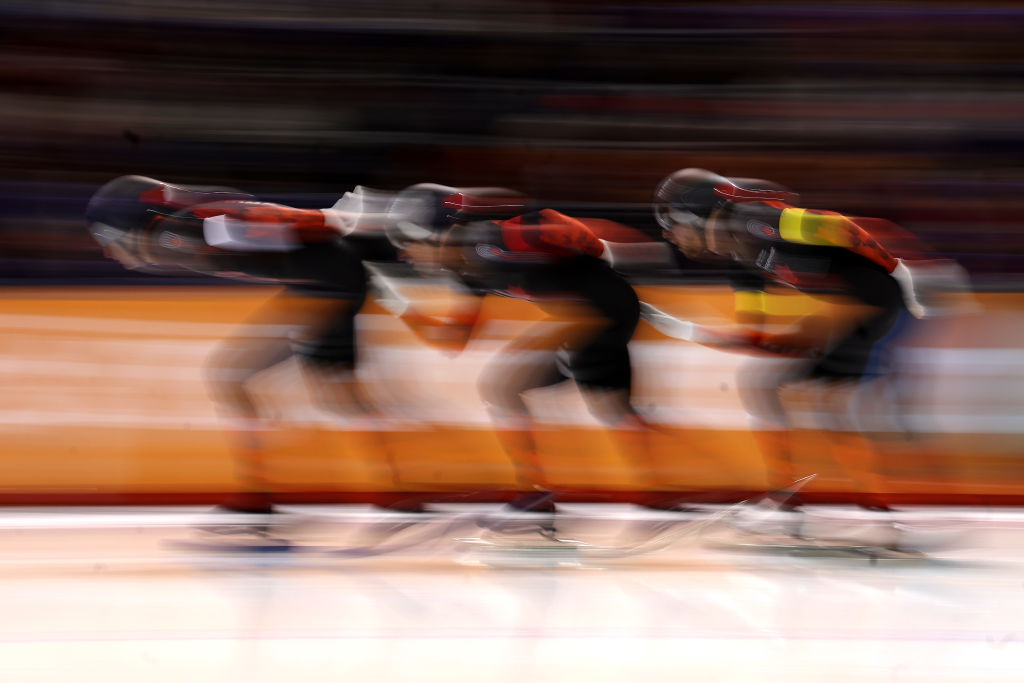
Team Canada skates in the Men's Team Pursuit at the 2024 ISU World Single Distances Speed Skating Championships in Calgary, Canada © ISU
Team Sprint
Two teams of three skaters start in opposite positions on the track, with the start and finish at the 1000m line. The team which is fastest over three laps, wins. Three skaters start together for three laps, but only one finishes. The lead-out skater leaves the track after one lap, the second in line leads for another full lap, before leaving it to the third skater to finish it off.
Mixed Gender Relay
Teams comprise one woman and one man, with a maximum of four teams in the same heat. The race is over six laps with the women skating one lap, followed by two for the men, another two for the women, before the men finish with one final lap. Exchanges are made with a push in a marked 50m exchange zone.





